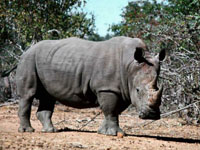Global warming changing animal's DNA
Studies have shown that global warming is acting fastest at the most northern latitudes, resulting in longer growing seasons. The change is also alleviating winter cold stress without imposing summer heat stress.

Animals depend on the day length to decide when to reproduce, hibernate , and migrate, Holzapfel explained. Although the amount of sunlight on a given day remains unchanged from year to year, the temperature on those days is steadily climbing.
Many animals time their migrations so they arrive in an area at the same time food is most abundant, but some food items sprout in response to warm temperatures and are becoming available earlier.In soma cases, animals are showing up as the food source is starting to fade, leading to a decrease in fitness and survival of offspring, LiveScience.com reports.
While shrinking glaciers and animals struggling to adapt to a changing global climate might grab all the headlines, pathogens that require a longer growing season could emerge, Holzapfel said.
The researchers provided a number of examples of these changes: Canadian red squirrels reproducing earlier in the year; German blackcaps are migrating and arriving earlier to their nesting grounds; and North American mosquitoes living in the water-filled leaves of carnivorous plants are using shorter day lengths to cue the initiation of larval dormancy, People's Daily Online reports.
Subscribe to Pravda.Ru Telegram channel, Facebook, RSS!





